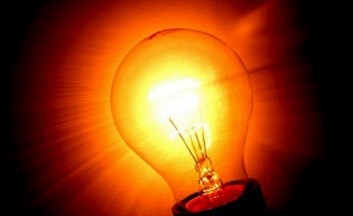Social quota for electricity: beginning of the end of cross-subsidies in the energy sector
 The situation has not changed
The situation has not changed

State Energy System Development Programme until 2016 envisages a phased increase in the level of electricity cost recovery by the population, reaching 100% in cost recovery by 2015. The proposed option should be considered as an interim solution for vulnerable groups. In the future, social quotas will be corrected, either downwards, or the electricity tariff for the population for consumption above the quota will increase.
Before November 1st, 2012 public discussions about introduction of differentiated electricity tariffs will be held.
According to the State Energy System Development Programme until 2016, the projected growth of cost recovery for the electricity production and supply in 2013 will increase up to 47.9%, in 2014 – 72.7%, in 2015 – 100%. Energy Ministry spokesperson said that the electricity production cost in Belarus was USD 0.1 per 1 kW/h.
As the alternative to an increase in electricity tariffs for households, it was decided to introduce social tariffs. For households with electric stoves, the following formula is applied: 120 kW/h (per person) +20 kW/h (per each additional person registered in the household). For household with gas stoves, the following formula is applied 70 kW/h +15 kW/h. During winter period, the quota per person will be somewhat increased. If consumption exceeds the set quota, electricity costs will double.
Belarusian population consumes about 20% of the electricity produced. Industry is a more capacious consumer, but electricity cost for industry is higher than for the population. Thus, industry subsidizes low electricity costs for the population. The need to correct the price level for the industry and for the population is obvious. Electricity costs affect the production costs and as a result, impact on the products’ competitiveness.
This alternative proposal is better for the population in terms of family budget expenditures. The vast majority will fit into the social quota and overpayment for the consumption above this quota will be insignificant. The quota is pegged to production costs, which increase year after year in Belarus, despite the reduction in raw materials’ price, used to produce energy, i.e. natural gas.
Population’s expenses on electricity will not increase significantly if this alternative scheme is applied. In order to cut electricity costs for the industry, a more substantial rise in electricity prices for the population is needed. Alternatively, electricity production costs could be reduced, but this requires a significant investment in the country’s energy sector.
Therefore, social quotas are a temporary measure. Thereafter, for a significant reduction in the electricity prices for industry, either the quota needs to be reduced or it should apply only to the socially disadvantaged citizens or the consumption costs exceeding the quota need to be even higher. Alternatively, as incomes grow, the quota could be canceled.
Subscribe to our newsletter




Situation in Belarus
Constitutional referendum: main consequences


 Video
Video
How to count the political prisoners: are the new criteria needed?


 Video
Video
Paternalism In Decline, Belarusian Euroscepticism, And The Influence Of Russia


 Video
Video












